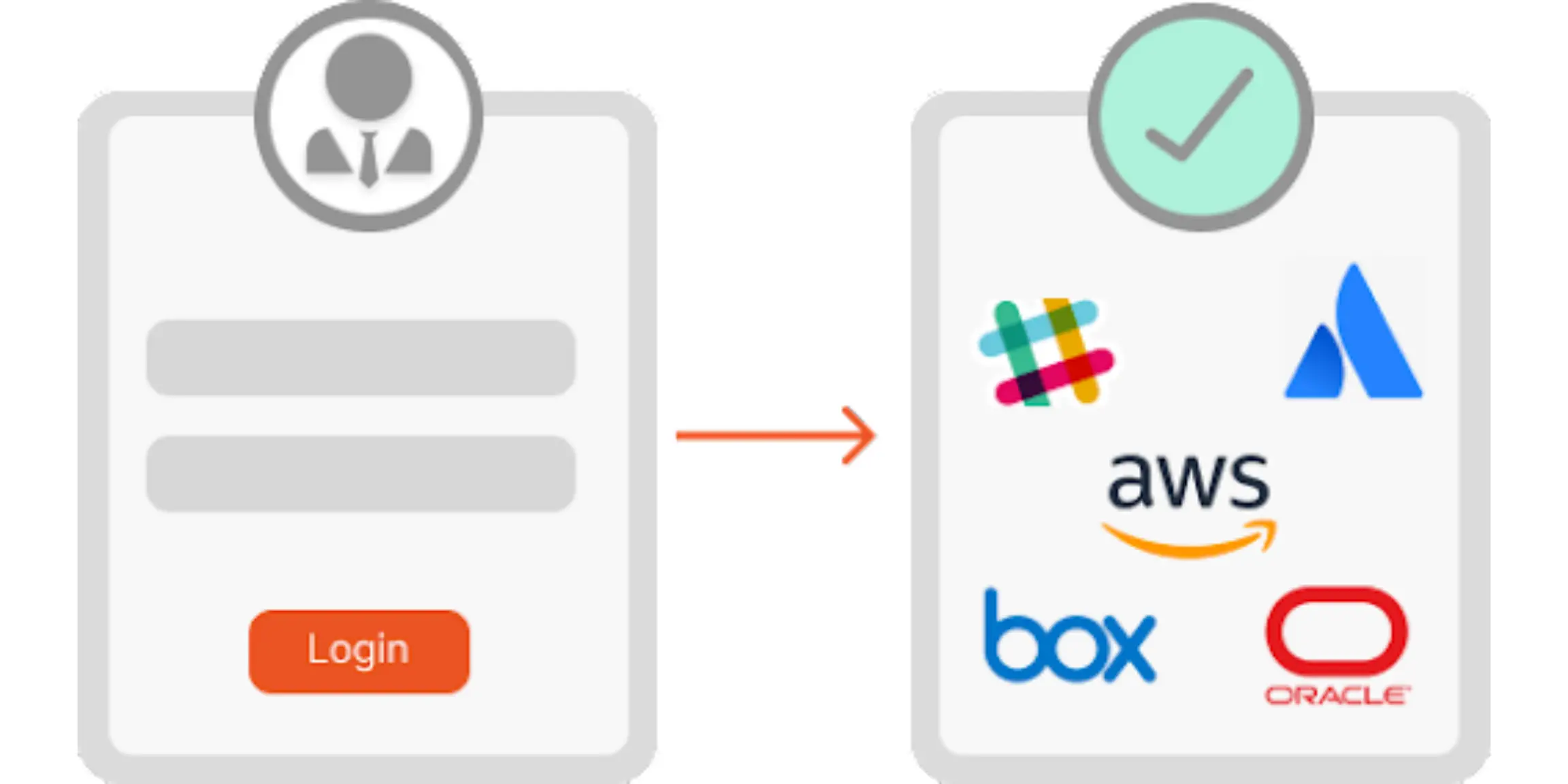According to Security Magazine, the typical business user oversees 191 passwords for work-related purposes and dozens more for personal ones. Up to 5 million passwords may be used by staff members of a company with 25,000 employees. Given the prevalence of passwords, password vulnerabilities are a major contributor to security breaches that result from cyber-attacks.
Passwords that are too simple, easily figurable, used on multiple systems, and not frequently enough present hazards. Avoiding using the same password across many systems is one of the finest security measures. The majority of experts are familiar with this principle. However, 61 percent of typical corporate users acknowledge using the same password across the board.
Employees waste a lot of time inputting passwords, which is another issue with this password bloat. Eliminating the need for multiple passwords is one approach to the password management issue. It is feasible to use a centralized authentication technique provided by a “web-based single sign-on” (Web SSO) system in place of using a collection of passwords to access various online services.
What is Web SSO?
Web SSO is a technique for managing browser-based sessions that keeps the user logged in across all of your applications by using sessionStorage, localStorage, and cookies. On-demand authentication is provided by a centralized domain, which also shares the session with authorized applications. Therefore, regardless of the platform or domain, the user is utilizing, once a customer logs in to any one application, they can instantly log into another.
How does web single sign-on work?
A trust connection between online systems and websites is necessary for a web single sign-on system. When a user accesses an online service or a website that requires a password, web SSO systems follow these steps for authentication:
Verify Sign-In: Checking to determine if the user is already logged into the central authentication system is the first step. Access is immediately given if the user is logged in. If not, the user is told to sign in.
User Sign-In: The user must first sign into the authentication system with a special username and password before beginning any session. The session token used by the authentication system is valid until the user logs out.
Confirmation of Authentication: Following the completion of the authentication procedure, the authentication data is sent to the web service or website requesting user verification.
Web App SSO: Is It Still In Use?
The market is moving away from providing this as a more conventional point solution in conjunction with a separate directory service, even if the web application SSO is still widely used across many enterprises.
Alternatively, the interest and adoption of broader, more comprehensive identity and access management (IAM) platforms are expanding, with the web app SSO as a major component. Among many other features that allow IT more control over identities and access, a comprehensive IAM platform has extensive single sign-on capabilities.
Organizations no longer need to worry about adding a web application SSO solution on top of their own directory/IdP because all essential IAM functionalities are available in a single platform.
The transition away from web app SSO point solutions is happening for a few reasons:
-
An interest in vendor consolidation.
-
A desire to avoid hidden costs.
-
A widespread need for improved identity and access management.
Common Web App SSO Use Cases
There are a variety of use cases that drive web app SSO adoption:
- Small organizations that use a variety of web applications.
- Mid-market and enterprise-sized organizations that implemented web app SSO back when it was more relevant as a standalone solution within the IT environment.
- Organizations with Active Directory (AD) in place already.
- Organizations trying to adopt an IAM strategy.
- Organizations that are unaware of the modern cloud-based replacement for AD and web app SSO that is a far more seamless, cost-effective, and integrated platform.
Password vaulting vs. Web SSO
A secured vault containing several passwords for various online services is different from a web SSO. By using a single username and password, password vaulting secures numerous passwords. However, each time a user visits a new online service this necessitates a signing into the service. There must still be a sign-in process even if the form fields are automatically filled out using information from the password vault. Once a person has been authenticated via Web SSO, they are no longer required to sign in to any web services that make use of that authentication method. This is called a “sign in once/use all” authentication approach.
Why Web SSO Is Necessary for Your Business
By securely collecting a plethora of customer data and credentials in one location for usage by your services, teams, and applications, single sign-on immediately helps your organization. Customers will view you negatively as they attempt to use your apps and services if you don’t use SSO. The numerous advantages that single sign-on offers your company, on the other hand, make product managers who implement an SSO solution stand out:
- Boosts IT staff members’ productivity
In general, a single point of access reduces the number of time users must spend resolving password-related problems and concerns. Single sign-on allows you to:
Reduce support calls: Users who only need one password to access all of their apps won’t need it as frequently.
Enhancing the consumer experience: Customers minimize the time between 10 and 15 seconds on each sign-in since there is no need to go between numerous login URLs or change passwords.
Reduce security risks: Employees can use SSO capabilities to log in with a single set of credentials on any device and in any web browser without jeopardizing security.
As we can see, one of the most important advantages of single Sign-On is the capacity to improve consumer productivity.
-
Strengthened security capabilities
There are certain myths surrounding the deployment of the SSO solution, such as the idea that it reduces security because if the master password is stolen, all connected accounts will be at risk. This seems to be the case in theory, but by using SSO and common-sense procedures, we can lessen password theft. Customers are more likely to construct a stronger (harder to guess) passphrase and reduce risk by limiting bad password practices since they only need to remember one password for various applications. -
Integrates SSO with Risk-Based Authentication (RBA)
As was already noted, SSO provides your customer with a single “key” that allows them to sign in to various online pages, mobile apps, and third-party systems with a single identity. Combining SSO with risk-based authentication (RBA), which allows businesses and their security team to track consumer behavior, would increase security even further.
In this manner, a company can request additional identity verification if it notices any strange customer activity, such as the use of an incorrect IP address or repeated login failures; if the customer fails at this stage, the company can ban or suspend their access to the account. Organizations may protect their websites and apps against assaults by utilizing this powerful combo. They can feel secure knowing that data thieves and IT hogs won’t take their information. -
Makes the consumer experience more efficient
Customers can enjoy a cutting-edge digital experience since SSO eliminates the need for multiple logins. Customer happiness, a boost in loyalty, and improved conversion rates are advantages for businesses.
Conclusion
In this post, we discussed Web Single-Sign-ON capability and potential to increase company ROI. We discovered how it improves responsiveness, security, comfort, and efficiency for both customers and businesses. Web SSO is incredibly practical and popular.
Get a Demo and Try miniOrange’s SSO Solution for Free. Explore miniOrange’s modern IAM SSO solution and see if it helps out to streamline your Organizational process in addition to security. Create a miniOrange Free Account and get access to all features for free, for up to 30 Days with 24*7 free support to help you out with the setup.
Author





Leave a Comment